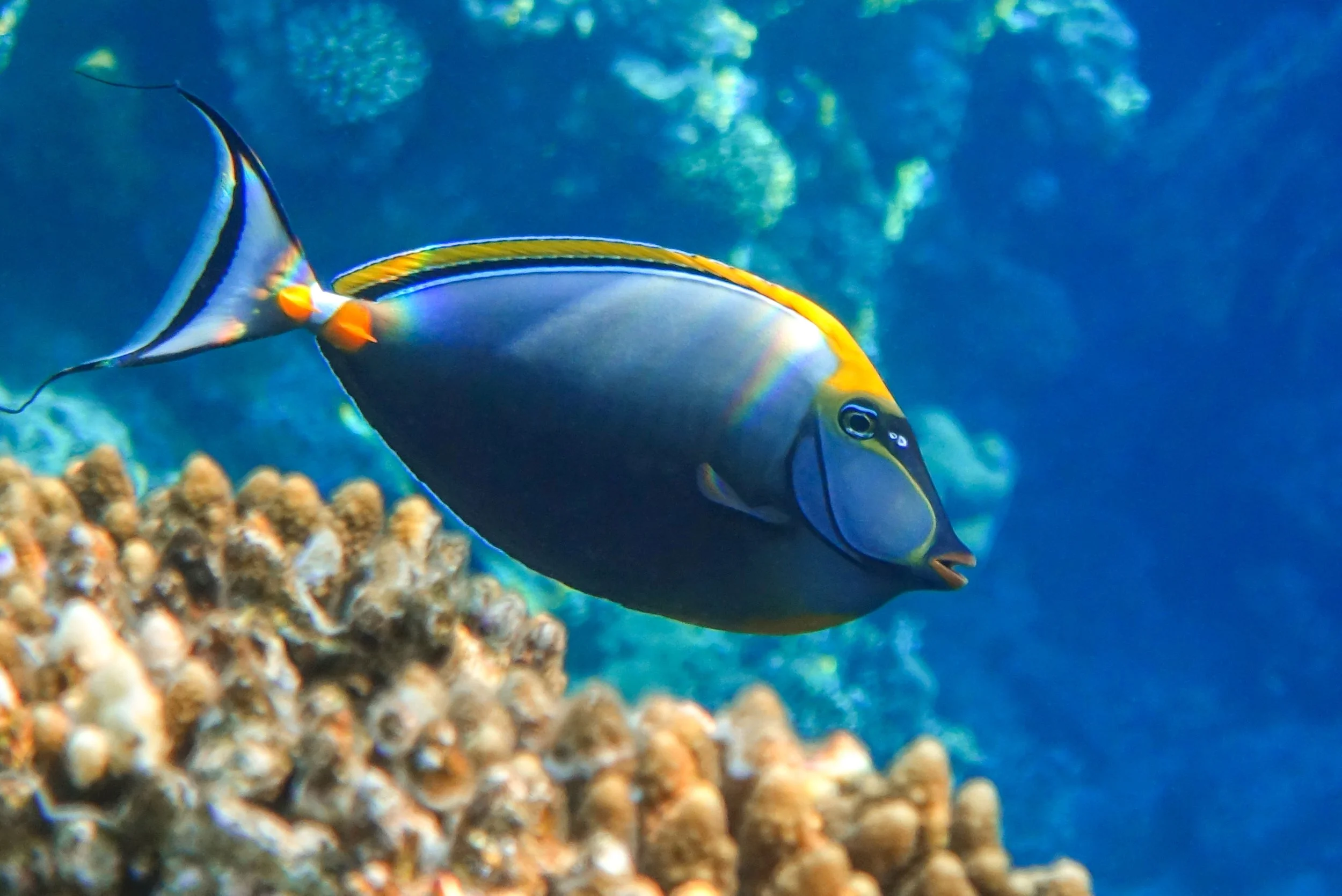 Image 1 of 1
Image 1 of 1


Blonde Naso Tang 4.5-5" Sold Out
The Blonde Naso Tang, also called the Orange-spine Unicornfish, changes as it matures. As a juvenile, it has a gray body with yellow stripes on both the dorsal and anal fins. As it grows, its body darkens to a bluish-gray hue, and more vibrant colors appear. Its tail develops a lyre shape, and two yellow patches form near the peduncle spines close to the tail. A thin black mask emerges between the eyes and mouth, while the lips turn yellow. Naso Tangs from Hawaii tend to have more vivid coloration than those from other regions.
A 180-gallon or larger aquarium is essential to give them ample swimming space, hiding spots, and a secure lid to prevent jumping. While they can be aggressive toward other tangs, they usually remain peaceful with other tank mates.
Though Tangs will eat meaty foods alongside other fish in the aquarium, it's crucial to provide them with a diet rich in marine-based seaweed and algae. This helps boost their immune system, reduces aggression, and promotes overall health. You can offer dried seaweed attached to a rock or use a veggie clip, feeding them at least three times a week.
The Blonde Naso Tang, also called the Orange-spine Unicornfish, changes as it matures. As a juvenile, it has a gray body with yellow stripes on both the dorsal and anal fins. As it grows, its body darkens to a bluish-gray hue, and more vibrant colors appear. Its tail develops a lyre shape, and two yellow patches form near the peduncle spines close to the tail. A thin black mask emerges between the eyes and mouth, while the lips turn yellow. Naso Tangs from Hawaii tend to have more vivid coloration than those from other regions.
A 180-gallon or larger aquarium is essential to give them ample swimming space, hiding spots, and a secure lid to prevent jumping. While they can be aggressive toward other tangs, they usually remain peaceful with other tank mates.
Though Tangs will eat meaty foods alongside other fish in the aquarium, it's crucial to provide them with a diet rich in marine-based seaweed and algae. This helps boost their immune system, reduces aggression, and promotes overall health. You can offer dried seaweed attached to a rock or use a veggie clip, feeding them at least three times a week.